Related Research Articles

The United Kingdom has had a significant film industry for over a century. While film production reached an all-time high in 1936, the "golden age" of British cinema is usually thought to have occurred in the 1940s, during which the directors David Lean, Michael Powell, and Carol Reed produced their most critically acclaimed works. Many British actors have accrued critical success and worldwide recognition, such as Audrey Hepburn, Olivia de Havilland, Vivien Leigh, Glynis Johns, Maggie Smith, Laurence Olivier, Michael Caine, Sean Connery, Joan Collins, Judi Dench, Julie Andrews, Daniel Day-Lewis, Gary Oldman, Emma Thompson, Anthony Hopkins and Kate Winslet. Some of the films with the largest ever box office returns have been made in the United Kingdom, including the third and sixth highest-grossing film franchises.
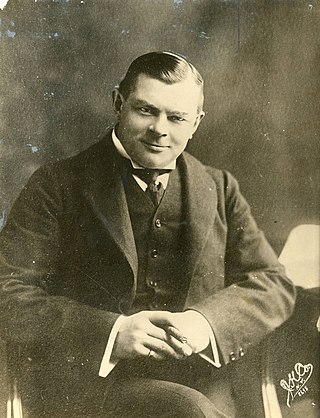
Charles Urban was an Anglo-American film producer and distributor, and one of the most significant figures in British cinema before the First World War. He was a pioneer of the documentary, educational, propaganda and scientific film, as well as being the producer of the world's first successful motion picture colour system.

Kinemacolor was the first successful colour motion picture process, used commercially from 1908 to 1914. It was invented by George Albert Smith in 1906. He was influenced by the work of William Norman Lascelles Davidson and, more directly, Edward Raymond Turner. It was launched by the Charles Urban Trading Company of London in 1908. From 1909 on, the process was known and trademarked as Kinemacolor and was marketed by Charles Urban’s Natural Color Kinematograph Company. Urban sold Kinemacolor licenses around the world. It was a two-colour additive colour process, photographing a black-and-white film behind alternating red/orange and blue/green filters and projecting them through red and green filters.

George Albert Smith was an English stage hypnotist, psychic, magic lantern lecturer, Fellow of the Royal Astronomical Society, inventor and a key member of the loose association of early film pioneers dubbed the Brighton School by French film historian Georges Sadoul. He is best known for his controversial work with Edmund Gurney at the Society for Psychical Research, his short films from 1897 to 1903, which pioneered film editing and close-ups, and his development of the first successful colour film process, Kinemacolor.

Actuality film is a non-fiction film genre that, like documentary film, uses footage of real events, places, and things. Unlike documentaries, actuality films are not structured into a larger narrative or coherent whole. In practice, actuality films preceded the emergence of the documentary. During the era of early cinema, actualities—usually lasting no more than a minute or two and usually assembled together into a program by an exhibitor—were just as popular and prominent as their fictional counterparts. The line between "fact" and "fiction" was not as sharply drawn in early cinema as it would be after documentaries came to serve as the predominant non-fiction filmmaking form. Actuality is a film genre that remains strongly related to still photography.

Robert William Paul was an English pioneer of film and scientific instrument maker.
The Charles Urban Trading Company specialised in travel, educational and scientific films. It was formed in 1903 in London by the Anglo-American film producer Charles Urban, who struck out on his own after five years at the Warwick Trading Company. The slogan of the Charles Urban Trading Company was 'We Put the World Before You'.

James A. Williamson was a Scottish photographer and a key member of the loose association of early film pioneers dubbed the Brighton School by French film historian Georges Sadoul. He is best known for The Big Swallow (1901), a trick film with innovative use of extreme close-up, as well as Fire! and Stop Thief!, dramas with continuity established across multiple shots.
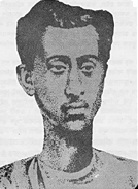
Hiralal Sen is generally considered one of India's first filmmakers. In 1903, he filmed the popular Alibaba and Forty Thieves, the first full-length Indian film. A noted photographer, he is also credited with creating India's first advertising films and quite possibly India's first political film. A fire in 1917 destroyed all of his films.
The Urban Bioscope, also known as the Warwick Bioscope was a film projector developed by Walter Isaacs in 1897 for Charles Urban of the Warwick Trading Company. The projector used a beater movement. It has two names because it was created by Charles Urban and Walter Isaacs. It was a 35mm fast-pull-down-beater-movement machine allegedly based on Georges Demenÿ patents. In 1897, Urban joined Warwick Trading in the UK. At that time he brought with him the Bioscope from America for resale. Earlier versions of the scope projected both slides and films. These versions came with a "spoolbank" attachment that made it possible for very short films to be repeated without pause.
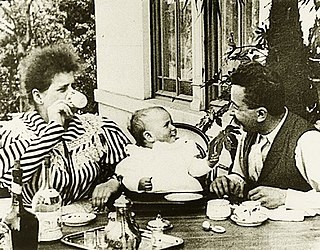
Repas de bébé is a 1895 French short black-and-white silent actuality film photographed by Louis Lumière and showing his brother Auguste Lumière and Auguste's wife Marguerite feeding their infant daughter, Andrée Lumière.
Who's Who of Victorian Cinema is a reference work on film pioneers by Stephen Herbert and Luke McKernan, British scholars of film history. Originally published by the British Film Institute in 1996 as a reference book, the content has been revised, updated and made available online. The site has biographies of more than 300 pioneers in the film industry, both directors and others who worked behind the cameras. It covers the period from 1871 to 1901, when films rapidly developed as a new way for people to see their worlds.

Alfred John West F.R.G.S. (1857–1937) was a British award-winning marine photographer in the Gosport firm of G. West and Son from 1881 and from 1897 at the age of 40, a pioneer cinematographer. He was then active in both roles until 1913 when he sold his copyright in negative plates of yachting studies to Beken of Cowes, and his stock of positive moving film in 1916 to a distributor, James Joseph Bennell, proprietor of: B. B. Film Hiring Service, 81, Dunlop Street, in Glasgow On the closure of the business, the film stock was then sold onwards to the 'Argosy Film Co. Ltd' in 1917 a company also registered at 81 Dunlop Street on 2 August 1917 which was in film business through the 1920s but was liquidated in 1930, the business passing to 'Audible Filmcraft' which was itself wound up in 1931. It is believed that the positive film stock was transferred from West to B.B. Hiring without completing the purchase.

Walter Robert Booth was a British magician and early pioneer of British film. Collaborating with Robert W. Paul and then Charles Urban mostly on "trick" films, he pioneered techniques that led to what has been described as the first British animated film, The Hand of the Artist (1906). Booth is also notable for making the earliest film adaptation of A Christmas Carol with the silent film Scrooge, or, Marley's Ghost (1901).
Albert Kirchner (1860–1902), better known under the pseudonym Léar, was a French photographer, manufacturer, exhibitor, and filmmaker who is noted for producing several religious and erotic films. He was employed by Eugène Pirou, a French filmmaker and photographer. Kirchner directed the first known erotic film, 1896 Le coucher de la mariée, that featured actress Louise Willy.
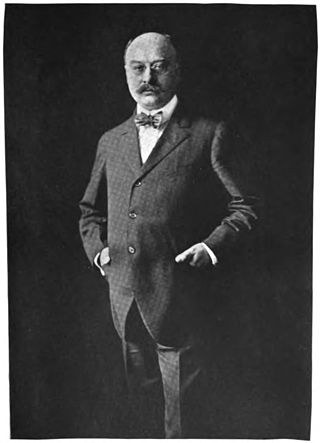
George Kleine was an American film producer and cinema pioneer.
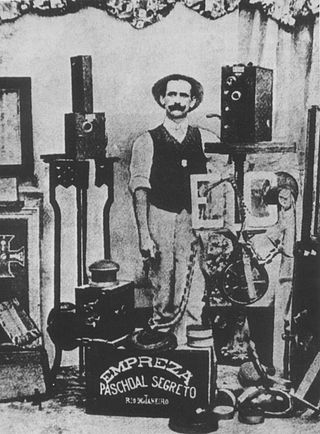
Affonso Segreto was a Brazilian filmmaker.

Henry Walter Barnett, usually known as H. Walter Barnett, was an Australian photographer and filmmaker. Barnett was a prominent portrait photographer of the late 19th and early 20th centuries, establishing the successful Falk studios in Sydney. Later in his career he was based in London, England, with studios at Hyde Park Corner and Knightsbridge. Barnett became involved in filmmaking after meeting cinematographer Marius Sestier in 1896, and with Sestier made some of the first films shot in Australia.
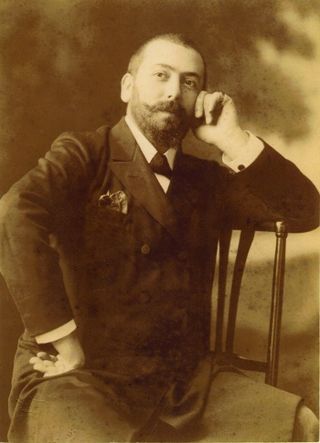
Marius Ely Joseph Sestier was a French cinematographer. Sestier was best known for his work in Australia, where he shot some of the country's first films.
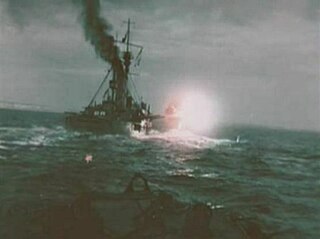
Britain Prepared (1915) is a British documentary feature film. The film is silent and made in black-and-white with some colour sequences in the Kinemacolor additive color process.
References
- 1 2 3 4 Gray, Frank. "Franck Zeveley Maguire and Joseph Delaney Baucus". Who's Who of Victorian Cinema. Retrieved 2 December 2013.
- ↑ Urban 1999, p. 45.
- 1 2 Urban 1999, p. 88-89.
- ↑ McKernan, Luke. "Charles Urban". Who's Who of Victorian Cinema. Retrieved 2 December 2013.
- 1 2 3 McKernan, Luke (2005). "Warwick Trading Company". In Richard Abel (ed.). Encyclopedia of Early Cinema. Taylor & Francis. pp. 685–686. ISBN 978-0-415-23440-5.
- ↑ Urban 1999, p. 88.
- ↑ Urban 1999, p. 86.
- Bibliography
- Urban, Charles (1999). A Yank in Britain: The Lost Memoirs of Charles Urban, Film Pioneer. The Projection Box. ISBN 978-0-9523941-2-9.